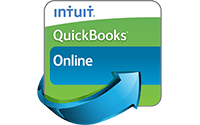Ah, the freedom of freelancing. You’re the boss, so you can set your hours, pick your clients and choose your projects.
Plus, you’re solely responsible for paying your own taxes, at tax time and all year long—
Wait, what?
That’s right! As a freelancer, knowing how much and when to pay taxes is all on you. But don’t panic. With knowledge, organization and help from an experienced tax preparer or accountant, you can keep enjoying your freedom without dreading that bill from the IRS.
You (and the IRS) know you’re a freelancer if…
If you earn $400 or more per year from a single employer as a freelancer, you’re self-employed in the eyes of the IRS—and this income must be included in your annual tax return. So not only are you responsible for your personal income taxes, but you’ll also pay a 15.3 percent self-employment tax to cover Social Security and Medicare taxes an employer would deduct from a paycheck.
The IRS will know you’re a freelancer because, for every client, you’ll complete a W-9 form at the time you’re hired. This form asks for your name, address and tax identification number (TIN), which is then reported to the IRS. At the first of the year, instead of a W-2, you’ll receive a 1099-MISC from every client who pays you $600 or more during the year.
It’s taxing time!
Since taxes aren’t deducted from the paychecks you receive from your clients, it’s up to you to put aside money from each check to pay federal, state, local and self-employment taxes—and to pay them on time. If you expect to owe more than $1,000 in taxes for the year, you’re required to pay estimated taxes each quarter (due January, April, June and September). If you underpay your quarterly taxes, you’ll need to pay the balance when you file your April 15 tax return. If you underpay too much, you’ll be looking at an additional fine.
These two forms, which can be found at irs.gov, can help you with the estimations and calculations:
- Form 1040-ES helps estimate how much you’ll make during the year and what your estimated quarterly taxes should be based on those projections.
- Schedule SE helps calculate the self-employment tax you’ll report along with your regular income tax on your 1040.
It’s a good idea to set up a separate savings and checking account for your business in order to keep personal and business finances from commingling. Estimate what percentage of each paycheck should go toward taxes (an accountant or tax preparer is your best source for this information, but 25 to 35 percent is a figure commonly cited by finance professionals, depending on your personal situation). The second your pay hits your account, move what’s needed into the account you’ve earmarked for taxes…and DON’T touch it until it’s needed to pay your quarterly or yearly taxes (seriously, don’t).
The fun stuff: Deductions
Common deductions for freelancers can include:
- Home office space
- Auto and travel expenses
- Internet and phone
- Health insurance
- Office supplies
- Computer hardware and software
- Advertising materials
- Legal and professional services
- Taxes and licenses
- Certification costs
- Business meals
However…the IRS puts certain restrictions on many of these deductions, which is why they’re quick to red-flag inflated deductions. It’s also why self-employed people tend to be audited more often than W-2 employees. But if you’re a diligent record keeper who is truthful and accurate with your deductions, your likelihood of audit will be lower.
A freelancer’s best friend
Now that your time really is money, it’s more valuable than ever. Don’t waste it trying to hunt down a million receipts. A good bookkeeping app like QuickBooks® will offer digital scanning capabilities to help keep your documentation organized and easily accessible at tax time.
Speaking of tax time, we can’t emphasize this enough:
Work with a tax accountant or CPA. Tax laws change frequently, so a good tax pro can be a freelancer’s best friend. Their fees will be a pittance compared to the amount you’d pay for a huge tax bill (surprise!) or penalties incurred for underpaying taxes.
Now, armed with this information, it’s time to put your own tax plan into place—and go forth and fearlessly freelance.
(Note: The information in this article was written with the sole proprietor business structure in mind. If you’re an LLC, S-corporation or C-corporation, details will vary.)







